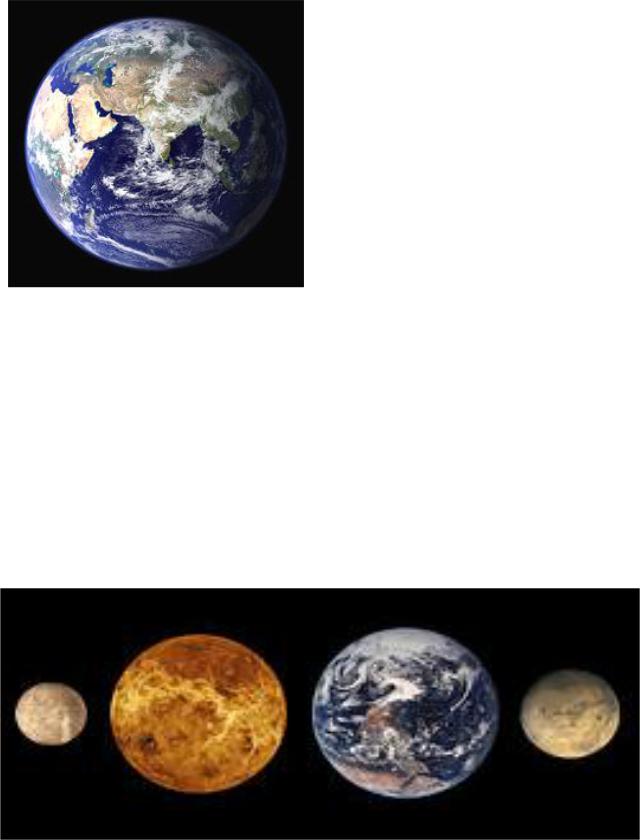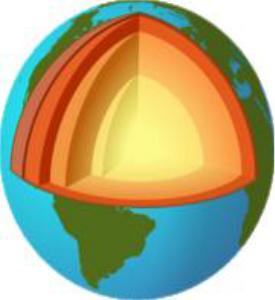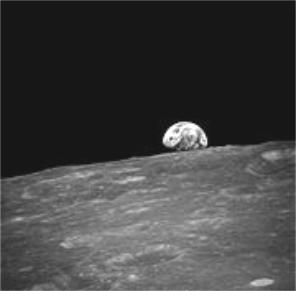
zhurova_t_v_angliiskii_yazyk_dlya_studentovgeologov (1)
.pdf11
Close, usual, individual, true, chemical, entire, physical, particular, substantial, relative, continuous, constant, precise, active, internal, natural.
c) Translate into Russian the following words of the same stem.
1.Atmosphere – atmospheric
2.To compose – composition – composer
3.Geology – geological – geologist
4.Physics – physical – physically
5.Conservation – to conserve – conservative
6.System – systematic – systematically
7.To rotate – rotation – rotor
8.To alter – alteration – alternative
9.Variety – various – to vary
10.Nature – natural - naturally
VII. Answer the questions.
1.What has made particular progress in recent years?
2.Is the Earth the sixth or the fifth largest planet of the solar system?
3.What is the Earth’s order from the Sun?
4.What does the Earth consist of?
5.Why can the Earth hold substantial atmosphere?
6.What makes the Earth’s temperatures moderate?
7.Are there any temperature fluctuations on the Earth?
8.What makes water continuously available to living things?
9.What indicates the continuous physical activity of the Earth?
10.Why is the Earth a unique planet?
VIII. Complete the sentences, using the words in brackets.
(Sciences, powers, physical activity, interior, faulting, unique, spherical mass, solid rock, subsidence, moderate, available, solar system, fluctuations, study)
1.The Earth is the fifth largest planet of the … … .
2.The Earth’s temperatures are … with relatively minor … .
3.Solar heat … the Hydrological Cycle.
4.The science of the … of the earth has developed into a large group of individual …
5.The Hydrological Cycle makes water … to living things.
6.The Earth’s crust is being altered by thrusting, folding … and uplift or … of its parts.
7.Little is precisely known about the Earth’s … .
8.The Earth is a … planet.
9.Seismic evidence indicates that … … is continuous.
10.The Earth consists of a nearly … … of more or less … … .
12
IX. Make up sentences from the given words.
1.powers, the, heat, Cycle, solar, Hydrological.
2.planet, is, system, of, the, solar, fifth, the, largest, Earth.
3.a, essentially, mass, consists, of, nearly, Earth, spherical, the.
4.substantial, has, the, to, gravitational, the, sufficient, hold, atmosphere, Earth, attraction.
5.indicates, the Earth’s, that, activity, seismic, is, evidence, continuous, physical.
6.of, folding, is, thrusting, being, the, faulting, crust, altered, the, Earth, by.
X.Grammar revision. Tense forms.
a)Define the tense form and the voice of the verbs in the sentences. Translate the sentences into Russian.
Tense forms
1.While petroleum was being formed, cataclysmic events were occurring elsewhere.
2.Some formations were exposed to wind and water erosion and then once again buried.
3.Geologists have classified petroleum traps into two basic types: structural traps and stratigraphic traps.
4.A fault trap occurs when the formations on either side of the fault have been moved into a position that prevents further migration of petroleum.
5.The importance of hydrocarbons for illumination has become significant since the invention of electric light.
6.Millions of tons of sulphur are extracted from hydrocarbons every year.
7.Since the invention of machines, people have been seeking energy to keep these machines running.
8.Everybody knows and hopes that new structures and oil fields will be found in the nearest future.
9.The process that formed the oil and gas that are produced today, started millions
of years before man came into being.
10.Without any doubt, petroleum has become the most important source of energy all over the world and is still increasing in importance relative to water and coal.
11.For several thousands years medium and lighter hydrocarbons have been used for illumination.
12.The importance of hydrocarbons for illumination has become insignificant since the invention of electric light.
13.The earth’s gravitation varies because different rocks have different densities.
14.All rocks contain magnetic particles.
15.Oil is formed from the decayed remains (prehistoric marine animals and terrestrial plants).
16.By 1910 significant oil fields had been discovered in Canada.
13
17.Offshore exploration and extraction of oil disturbs the surrounding marine environment.
18.Compaction of sediments in a basin which is sinking down, will remain a permanent process over geologic times
19.The work is being done and soon it will be finished.
20.With the sufficient underground pressure in the oil reservoir, the oil will be forced to the surface under this pressure.
21.Salt is being dissolved in the streams much faster now than in the past.
22.The science of the study of the earth has made particular progress in recent years. 23.The crust of the earth is being altered by thrusting, folding, faulting and uplift and
subsidence of its parts.
24.This scientist works in the field of geology.
25.We will have carried out a number of experiments by the end of the year.
b) Translate the following sentences, paying attention to the passive constructions:
E.g.: Oil production is increased from year to year.
Добычу нефти увеличивают с каждым годом. Добыча нефти увеличивается с каждым годом.
1.Generally speaking, by volcanic phenomena we mean the processes by which the hot substances-either in gaseous, liquid or solid state are brought up from the interior of the earth to its surface.
2.The study of geological agents is called dynamic geology.
3.The structure of igneous rocks is directly dependent on the conditions under which they are formed.
4.The modern classification of igneous rocks is based on their mineralogical composition, as well as their structure.
5.Igneous rocks are used in national economy for different purposes.
6.Sedimentary rocks are formed from the deposition of particles, from precipitates or from calcareous remains or organisms.
7.The oil is obtained by boring through the overlying rocks.
8.Economic geology is concerned with earth materials that can be utilized for economic and/or industrial purposes.
9.Sedimentary rocks are formed because of the overburden pressure as particles of sediment are deposited out of air, ice, wind, gravity, or water flows carrying the particles in suspension.
10.Igneous rocks are classified according to mode of occurrence, texture, mineralogy, chemical composition, and the geometry of the igneous body.
c) Put the verbs into the Past and Future Simple, Present and Past Continuous, Present Past and Future Perfect, preserving the Passive Voice. Add appropriate adverbs if necessary.
14
1.Detergents are used to decrease oil viscosity.
2.Various fuels are obtained from petroleum.
3.Wells are drilled to produce oil.
4.Oil fields are developed by means of modern technology.
5.These researchers are carried out at this Institute.
XI. Translate the following sentences into English, using active vocabulary of Unit I.
1.Земля - третья планета по порядку от Солнца.
2.Из - за своей массы, у Земли достаточное гравитационное притяжение, чтобы удерживать атмосферу.
3.Температуры Земли умеренные с небольшими отклонениями.
4.Солнечное тепло – это природный двигатель круговорота воды в природе.
5.Круговорот воды делает воду постоянно доступной живым организмам.
6.Земля – уникальная планета по своим топографическим формам и химическому составу.
7.Наука о Земле развилась в большую группу отдельных наук за последние годы.
8.Кора земли является потенциальным источником минералов.
9.Надвиги, cдвиги, cкладкообразование, а также поднятие и опускание
частей суши – является доказательством физической активности Земли. 10.Процесс эрозии продолжает вызывать изменения в коре Земли и на её
поверхности.
XII. Retell the text “Earth.”
XIII. Supplementary text. Translate the text, using a dictionary.
Earth
Earth is the third planet from the Sun and is the largest of the terrestrial planets in the Solar System, in both diameter and mass. It is also referred to as the Earth, Planet Earth, and the World, and in some contexts, Gaia and Terra.
Home to millions of species including humans, Earth is the only place in the universe where life is known to exist. Scientific evidence indicates that the planet formed 4.54 billion years ago, and life appeared on its surface within a billion years. Since then, Earth's biosphere has significantly altered the atmosphere and other abiotic conditions on the planet, enabling the proliferation of aerobic organisms as well as the formation of the ozone layer which, together with Earth's magnetic field, blocks harmful radiation, permitting life on land.

15
Earth's outer surface is divided into several rigid segments, or tectonic plates, that gradually migrate across the surface over periods of many millions of years. About 71% of the surface is covered with salt-water oceans, the remainder consisting of continents and islands; liquid water, necessary for all known life, is not known to exist on any other planet's surface. Earth's interior remains active, with a thick layer of relatively solid mantle, a liquid outer core that generates a magnetic field, and a solid iron inner core.
Earth interacts with other objects in outer space, including the Sun and the Moon. At present, Earth orbits the Sun once for every roughly 366.26 times it rotates about its axis. This length of time is a sidereal year, which is equal to 365.26 solar days. The Earth's axis of rotation is tilted
23.4° away from the perpendicular to its orbital plane, producing seasonal variations on the planet's surface with a period of one tropical year (365.24 solar days). Earth's only known natural satellite, the Moon, which began orbiting it about 4.53 billion years ago, provides ocean tides, stabilizes the axial tilt and gradually slows the planet's rotation. A cometary’s bombardment during the early history of the planet played a role in the formation of the oceans. Later, asteroid impacts caused significant changes to the surface environment. Long term periodic changes in the Earth's orbit, caused by the gravitational influence of other planets, are believed to have given rise to the ice ages that have intermittently covered significant portions of Earth's surface in glacial sheets.
Сопоставление размеров планет земной группы (слева направо): Меркурий, Венера, Земля, Марс

16
XIV. Professional translation.
Земля
Земля - третья от Солнца планета Солнечной системы, крупнейшая из планет земной группы, является местом обитания миллионов биологических видов, включая людей. Земля - единственное известное на данный момент планетарное тело, населённое живыми существами. Научные данные указывают на то, что Земля образовалась около 4,54 млрд. лет назад, а вскоре после этого приобрела свой единственный естественный спутник - Луну.
Строение Земли
Земля относится к планетам земной группы, а значит она, в отличие от газовых гигантов, таких как Юпитер, имеет твёрдую поверхность. Это крупнейшая из четырёх планет земной группы в солнечной системе, как по размеру, так и по массе. Кроме того, Земля имеет наибольшую плотность, самую сильную поверхностную гравитацию и сильнейшее магнитное поле среди этих четырёх планет.
Форма Земли (геоид) близка к вытянутому эллипсоиду-шарообразная форма с утолщениями на экваторе-cредний диаметр планеты примерно равен 12 742 км.
Вращение земли создаёт экваториальную выпуклость, поэтому экваториальный диаметр на 43 км больше, чем диаметр между полюсами планеты. Высшей точкой поверхности Земли
является гора Эверест (8 848 м над уровнем |
|
моря), а глубочайшей - Марианская |
|
впадина (10 911 м под уровнем моря). Из- |
|
за выпуклости экватора, самой удалённой |
|
точкой поверхности |
|
от центра Земли фактически является |
|
вершина вулкана Чимборасо в Эквадоре. |
Модель земли |
Unit II
I. Vocabulary
a) Translate the international words into Russian.
Chemical analyses, to indicate, proportion, material, to accumulate, to contribute, computation, region, sediment, mineral, to form, process.
17
b) Learn the vocabulary.
1.annuallyежегодно
2.to argueспорить, обсуждать, приводить доводы
3.bottom - дно
4.to carryпереносить, доставлять
5.to divideделить
6.to dissolve – растворять
7.to determineопределять
8.estimateоценка, подсчёт
9.quotientчастное
10.quantityколичество
11.saltсоль
12.streamпоток, течение
13.solutionраствор
14.swiftбыстрый
15.to tend – иметь тенденцию, склонность
c) Translate the word combinations into Russian.
Ocean bottom, total amount, slight errors, for instance, a shore line, land material, the age of the oceans, mineral matter, minimum age of the Earth, the following proportions, land regions, total quantity, above water.
II. Translate the sentences. Put questions to the words in italics.
1.The minimum age of the Earth was determined from the study of the ocean salts.
2.Various salts in the oceans are carried there in solutions by the streams.
3.The salts accumulate in the ocean water.
4.There are several chances for slight errors to be made in this computation.
5.The streams from the land probably carried less sediment and mineral matter in solution.
6.The earth had to come first to make a place for the oceans.
7. Salt is being dissolved much faster now than in the past.
8.Some of the salts of the oceans may have come from the rocks on the shorelines and at the bottom.
9.Chemical analyses of the ocean water indicate that salts are present in different proportions.
10.All materials except the salts tend to become sediment at the ocean bottom.

18
III. Read the text.
Age of the Earth
At the beginning of the last century, the earth was thought to be at least 1 mln. years old, possibly as much as 5 mln. years old. The former estimate of the minimum age of the earth was determined from a study of the ocean salts. Chemical analyses of ocean water indicate that salts are present in the following proportions:
Potassium sulphate-2,5% Sodium chloride-77% Magnesium chloride-11% Magnesium sulphate-5% Calcium sulphate-4% Magnesium Bromide-0.5% Calcium carbonate-0.5%
These various salts in the oceans are carried there in solutions by the streams, along with other land materials that are carried as sediments. All materials except
salts tend to become sediment at the ocean bottoms, while the salts accumulate in the ocean water. Therefore, if we can determine the total amount of these salts in the oceans and divide that by the total quantity contributed annually by the streams, the quotient will be the time, in years, that this process has been going on, or, in other words, it will be the age of the earth.
There are several chances for slight errors to be made in this computation since one cannot be sure that the conditions in the past were always the same as now. For instance, the area of the land regions was probably less in the past than now. If less land was above water, the streams from it were probably not very swift, so they carried less sediment and mineral matter in solution. Besides, some of the salt of the oceans may have come from the rocks on the shorelines and at the bottom; some of it was lost to the oceans when the rock salt beds were formed. Allowing for the variable factors as best as we can, the age of the oceans has been estimated to be about 2 bln. years. If this is the age of the oceans, the earth must be older, since it had to come first to make a place for the oceans.
Some scientists have argued that this first estimate is still too small since salt is being dissolved much faster now than in the past, so they make their estimate of probable age of the earth two or three times greater than the age of the earth.
Notes
1.along with - вместе
2.allowing for the variable factors as best as we can - Учитывая наилучшим образом различные факторы.
19
IV. Find English equivalents to the following words and word combinations in the text.
1.прежняя оценка минимального возраста земли
2.изучение океанических солей
3.соли накапливаются в океанической воде
4.пласты соли
5.на дне
6.вероятный возраст земли
7.так как нельзя быть уверенным
8.в три раза больше
9.береговая линия
10.анализ океанической воды показывает
V. Match the synonyms.
1.different |
a) except |
2.quick |
b) material |
3.argument |
c) various |
4.river |
d) to be sure |
5.possible |
e) for instance |
6.because |
f) a stream |
7.stratum |
g) a factor |
8.besides |
h) swift |
9. substance |
i) a bed |
10.to be certain |
j) since |
11.for example |
k) probable |
VI. Word building.
a) Make up nouns from the verbs, using the suffix – sion, tion.
Translate them into Russian.
E. g. to estimate – estimation (оценивать – оценка)
to determine, to except, to divide, to contribute, to accumulate, to form, to fluctuate, to compose, to indicate, to attract, to rotate, to expose, to intrude, to separate
b) Form the nouns, using the suffix – er, or. Translate them into Russian.
E.g. composition – composer (состав – составитель, композитор)
Condition, accumulation, to process, to indicate, to divide, to carry
20
c)Translate into Russian the following words of the same stem.
1.to tend – tendency – tending
2.to divide – divider – divisible – division – divisional
3.annual – annually
4.probable – probability - probation – probe
5.to contribute – contributor – contributory
6.ocean – oceanic – oceanology
7.solution – solubility – solvent
8.salt – salty – salter
9.swift – swiftly – swiftness – swiften
10.to carry – carrier - carriage
VII. Answer the questions.
1.What did scientists think about the age of the earth at the beginning of the last century?
2.How was the minimum age of the earth determined?
3.In what way are various salts carried to the oceans?
4.Where do salts accumulate?
5.Do salts tend to become sediment at the ocean bottoms?
6.Why are there several chances for slight errors in this computation?
7.Why could streams carry less sediment and mineral matter in solution?
8.What is the age of the oceans?
9.What is the real age of the earth?
VIII. Complete the sentences, using the words in brackets.
(Computation, probable, carried, area, dissolved, regions, solutions, sediment (2), bottom, salts, accumulate, estimate, swift)
1.Salts … in the ocean water.
2.The former … of the minimum age of the earth was determined from the study of the ocean … .
3.There are several chances for slight errors in this …
4.All materials except salts tend to become … at the ocean … .
5.The … age of the earth is about 4 or 5 bln. years.
6.Various salts are … into the oceans in solutions by streams.
7.The streams from the land regions in the past were probably no very … .
8.In the past the … of the land … was probably less.
9.The streams carried less … and mineral matter in … .
10.Salt is being … much faster now than in the past.
